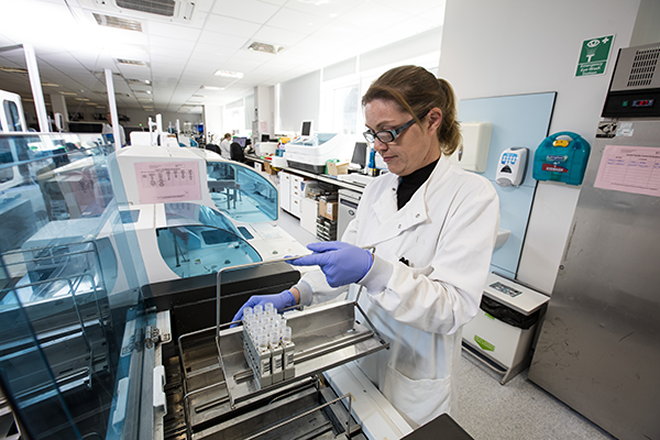Coronavirus – prepared for any outbreak

With news of the coronavirus globally affecting over 800 people, Public Health England issues guidelines for laboratories in the likelihood of cases in the UK
Traced to a fish and animal market in Wuhan, China, this coronavirus affects patients with symptoms similar to the flu. However, with reported cases of the virus dominating headlines across the globe, public fears are growing, and people want to know: are we prepared for an outbreak?
For a greater understanding of the virus we spoke with IBMS Fellow Sarah Pitt, IBMS Virology Specialist Advisory Panel Member and Principal Lecturer, School of Pharmacy and Biomolecular Sciences at the University of Brighton.
She said:
“The outbreak of a new coronavirus, which appears to have started in the Chinese city of Wuhan, is something to be taken seriously, but not to panic about.
Novel coronaviruses which can be transmitted between humans in noticeable numbers arise every few years. In 2002-3, there was an outbreak of a new coronavirus called SARS –CoV (Severe Acute Respiratory Syndrome Corona Virus).
Over 8,000 people were confirmed as having been infected with the virus. Most cases were reported from China and Hong Kong and at least 700 people died. The case fatality rate - which is the percentage of people who die from the disease as a proportion of those who were known to have been infected - was 9.6%. While this seems concerning, it is worth remembering that for Ebola the case fatality rate is it around 50% overall.
The next significant new coronavirus noted was Middle Eastern Respiratory Syndrome Corona virus (MERS-CoV) which arose in Saudi Arabia in 2012. People infected with the virus did travel outside of the Middle East and some cases have been reported in the UK, but there have not been many. So far there have been just under 2,500 confirmed cases of MERS-CoV and just over 850 deaths and the majority have been in Saudi Arabia.
On 31 st December, WHO was made aware that a novel corona virus (2019-nCov) had been identified in China. This would have been through laboratory analysis of samples taken from people with symptoms of an unusual and serious respiratory infection. The fact that it is a coronavirus and that it is a previously unknown one would have been discovered by analysis of the viral genome (it has a single stranded positive sense RNA genome).
There have been at least 500 confirmed cases (‘confirmed’ means that the virus has been identified in patients samples in addition to the clinical symptoms) and up to 20 deaths. The virus is clearly being transmitted from person to person quite easily, but it is important to remember that so far all the cases identified outside of China have been in people who have travelled to other countries from Wuhan. In other words, the infection was acquired in China.
The worldwide alert means that people with the infection can be managed and treated rapidly, so that the chances of the infection spreading can be minimised. The current concern is that a lot of people are moving across China and around the world to be with family and friends to celebrate Chinese New Year.
When people are first infected it can take some days (perhaps up to 2 weeks) before they develop symptoms, but an individual can be infectious during that time. They may be unaware that they even had contact with the virus and will probably feel quite well up until the point where the symptoms start to show.
This means that although taking the temperature of people arriving on flights from places where 2019-nCov is known to be circulating may be effective to some extent, it is unlikely to be a fool proof way of finding everyone who is incubating the virus.
If the WHO do declare a public health emergency, a key reason for that will be to raise awareness among public health, laboratory and medical professionals in order to try and limit the spread of the virus.
The risk to the general public in Europe is currently low, but Biomedical Scientists and other Institute of Biomedical Science members working in virology will be monitoring the situation closely.”
In response to the virus, officials in China acted quickly and have put the city on lockdown. While some scientists originally believed snakes acted as a reservoir for the virus, but this has been disproved. What is known is the virus can be easily transmitted between humans and symptoms are similar to that of the flu. Health officials are advising people to avoid contact with other people who are showing symptoms of the virus and to exercise proper health precautions.
Organisations like the World Health Organisation (WHO) have listed the situation surrounding the coronavirus as not a public health emergency and note that out of the reported cases only 4% are fatal. Public Health England have released a statement and shared a guidance for all UK laboratories, including how to handle samples, laboratory investigations and requirements for monitoring the infection.
As the world monitors the situation in China closely, we can rest assured that should any patients in the UK be diagnosed with 2091-nCov, they will be in safe hands.


